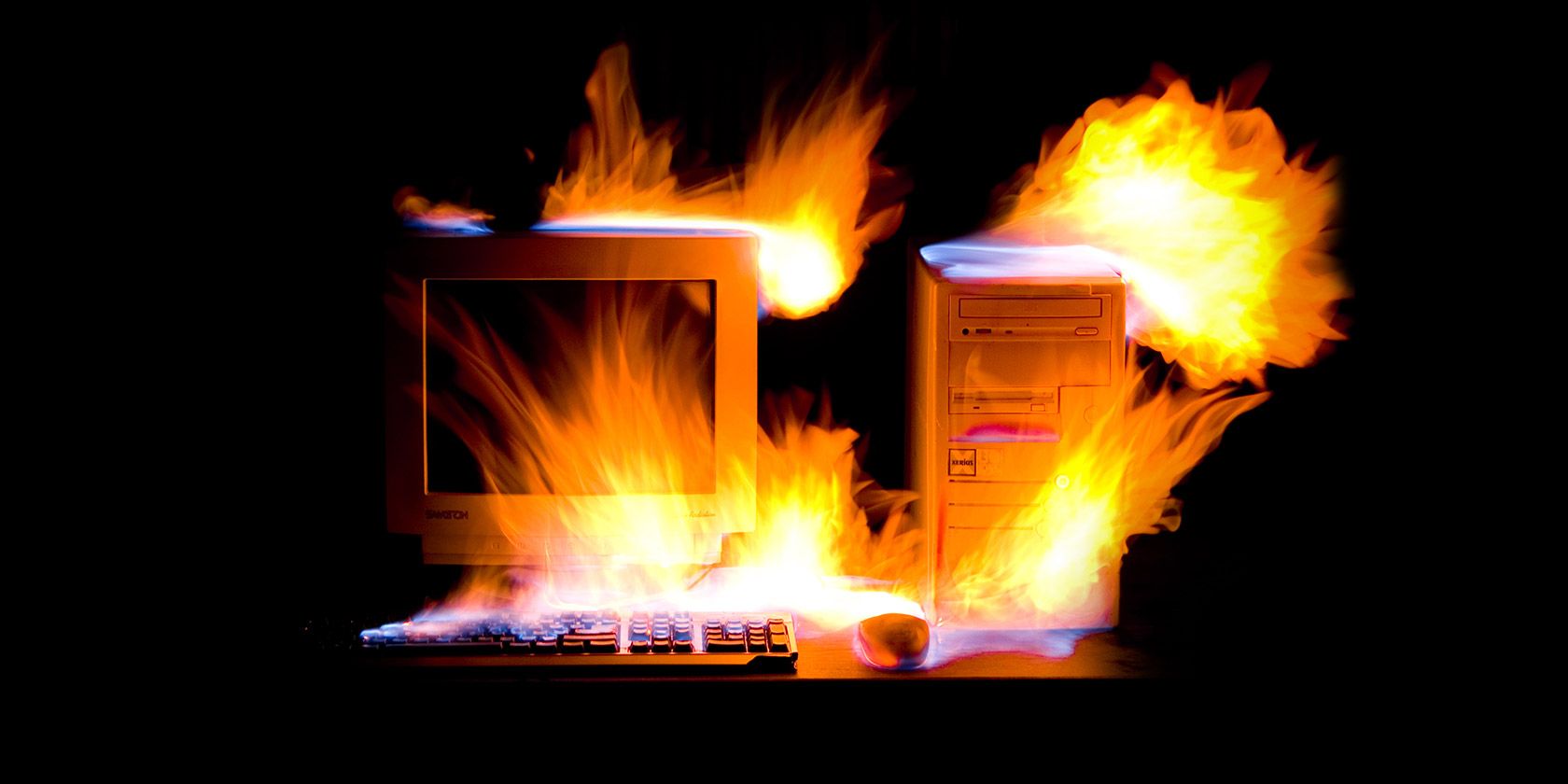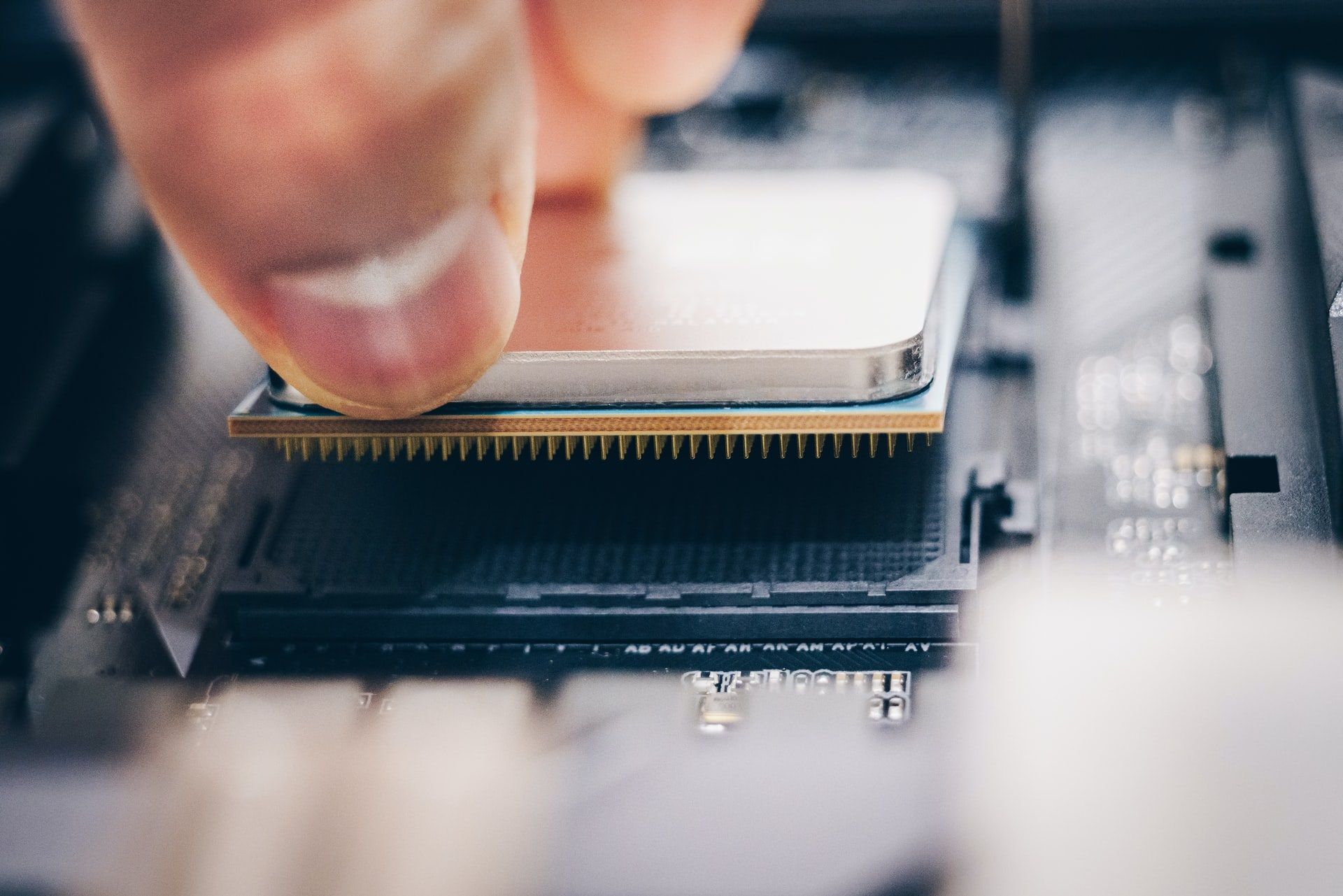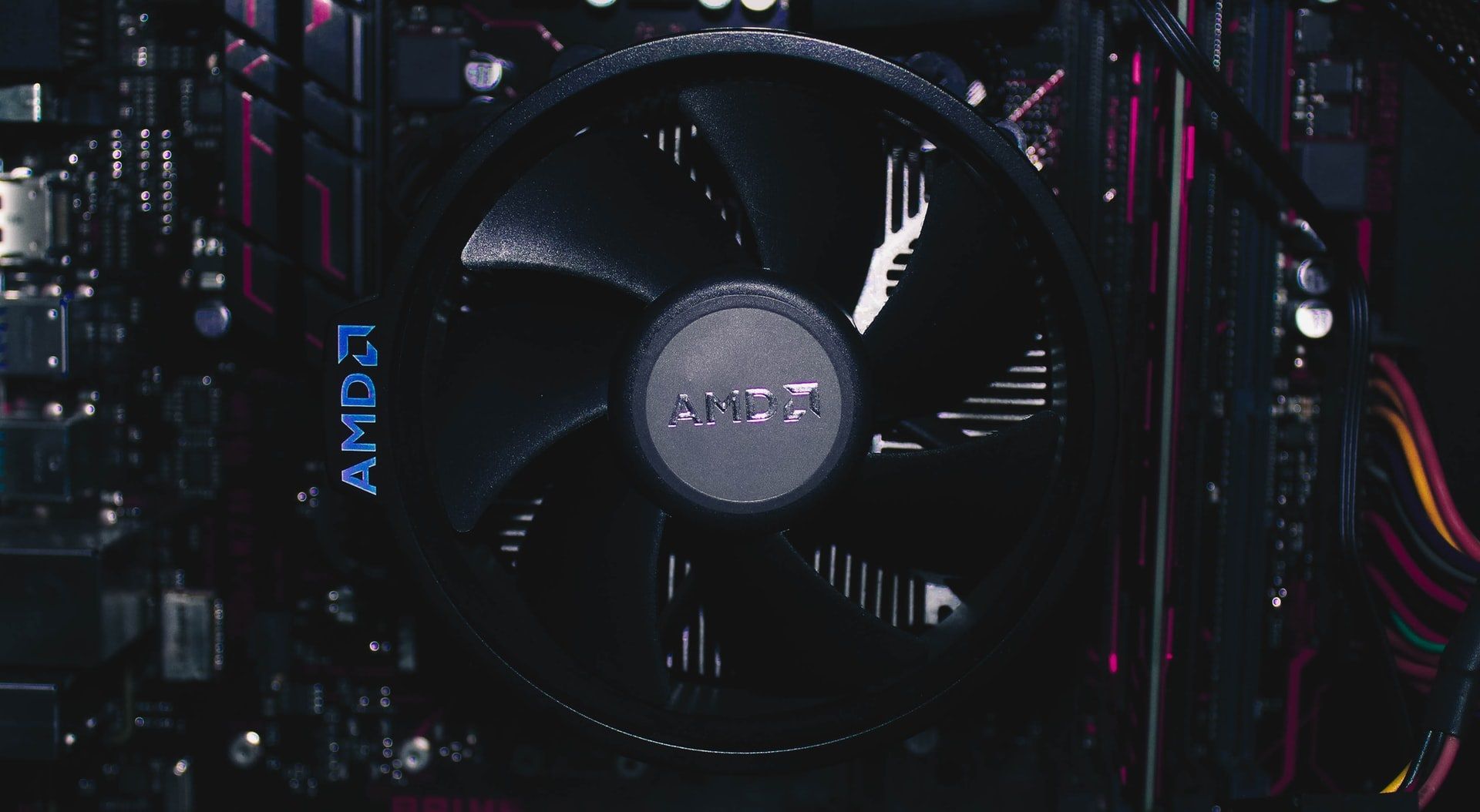Are you worried about your computer's temperature? Excessive heat can affect your device's performance and your hard drive's lifespan.
But how can you tell if it's overheating or just hot? What is a good temperature for your CPU? And what are the signs you should look out for that indicate that your PC is too hot?
How Is Heat Generated by Your PC?
Heat is a natural by-product of electricity. Anything that uses energy to set in motion an activity—whether that's a computer, a car engine, or our own bodies—results in heat transference. The amount of electricity needed is dependent on the task being performed.
Components inside your computer easily exude heat, notably the Central Processing Unit (CPU) and Graphic Processing Unit (GPU), as electricity is carried across circuits and experiences resistance.
Overclocking generates excessive heat, for instance. This is when you operate your CPU at a higher clock speed than intended by its manufacturers. You can typically find out ideal clocking rates by visiting the site of your processor's maker, but unless you're well-versed in speeds, these won't mean much to you.
The main benefit of overclocking is a more efficient and faster operating system, but it also requires a higher voltage to perform tasks. This greater need for electricity results in your CPU generating more heat.
Playing games, watching Blu-rays, and ripping, burning, and sharing files can all put a strain on your CPU, as does normal system maintenance, editing, and encoding. With several tasks being carried out at once, overheating can be a very real concern. Note that an overheating device could also be a sign of a hack: cybercriminals could have installed malware such as keyloggers or crypto mining software that may be running unnoticed in the background. These would make your PC run hotter and potentially damage your hardware too. At least run a security scan to give yourself some peace of mind.
Some users try to counteract the heat generated by standard systems operations using a process called underclocking. This lowers heat transference by replacing the oscillator crystal inside the component. But this naturally decreases the system's efficacy too. In fact, if you want to keep your room cool without AC, you might want to turn your computer off entirely.
How to Spot an Overheating PC
Even though heat affects performance, your PC temperature rarely gets high enough to disrupt everyday use.
However, if your computer is sluggish or regularly freezes, that's a major indicator that you're exceeding the maximum recommended CPU operating temperature.
The internal fans may also be noisier than usual, meaning they're working faster to lower the temperature of the motherboard and processor. It does this by venting hotter air away from important components via the heatsink (a naturally heat-conductive component typically made of aluminum) and out of the case.
Computers have a fail-safe that shuts down overheating parts to prevent permanent damage. However, the whole system will shut down in some instances and refuse to fully restart until it has sufficiently cooled. Even then, if there is malfunctioning hardware, it might allow you access to files briefly before shutting down again.
If you have access to the computer's interior, unplug the computer from the mains electric, then gently touch the components. Expect them to be quite warm, but none should be too hot to touch.
Take care when doing this, in case you hurt yourself or damage anything inside your machine.
There are numerous others ways to check the temperature of your CPU, if you want to be thorough.
Is Your PC Overheating or Just Hot?
Don't panic if you hear your PC's fans working. That's perfectly normal. Any strenuous tasks performed by the CPU, GPU, Hard Disk Drive (HDD), and, to a lesser extent, the optical drive (DVD or Blu-ray player) will raise your PC temperature. Computers typically generate heat without a detrimental effect.
Of course, if your fans constantly run at considerable, noisy speeds, that's a sign of overheating. However, if you don't hear the fan, that could also be the problem. A broken fan can be the reason your system is too hot, but how else can you tell if the machine is too hot? Your main indicator is your PC's performance.
Maybe it runs slower than normal, even when attempting to complete basic tasks like opening numerous tabs in your browser or running two programs simultaneously. Your PC might keep shutting itself down or restarting without any prior warning.
And of course, if it freezes completely and shows you the Blue Screen Of Death, something's definitely wrong!
Performance issues don't necessarily mean the ideal CPU temperature is being exceeded. Malicious software could also be affecting your computer, so employ good security measures to decrease this risk.
On Windows, you can check which applications are most CPU-intensive through the Resource Monitor. Just search for the app on your desktop, and you'll see which programs are running in the background (and likely some that have recently been terminated). Don't worry: this list will be extensive, and that's perfectly normal.
Aside from a broken fan, poor airflow caused by badly-positioned components or blocked vents might also be the cause of overheating. Where is your PC? An enclosed space can trap heat in; dusty surroundings can clog up the vents.
You could also keep an eye on your PC's heat with a temperature monitoring app.
What Temperature Should Your CPU Be?
Your computer is designed to operate at its maximum capacity at room temperature—that is, a comfortable room that feels neither too hot nor too cold. It's simple to say, but everyone prefers a different temperature!
So what is a normal computer temperature? Scientifically speaking, ambient room temperature is between 20 degrees C (68 degrees F) and 26 degrees C (79 degrees F), averaging at about 23 degrees C (73 degrees F). A simple mercury thermometer can give you an accurate gauge of your worktop.
A room in excess of 27 degrees C (80 degrees F) can be detrimental to your machine, but there's more to it than that.
So how hot is too hot when it comes to PC operating temperatures?
Your CPU will run at a higher temperature than the room, so don't panic when you initially see it. What temperature is too hot for a CPU to operate at? You should consult your system's documentation as it depends on what conditions your hardware is expected to function under normally.
So how hot can a CPU get? Generally, your processor shouldn't run at anything greater than 75 degrees C (167 degrees F), but there is some wriggle room, especially if you're running lots of apps at the same time. Edging towards 80 degrees C (176 degrees F) is typically okay for a short time.
Anything under 60 degrees C (140 degrees F) is perfect. Just above this temperature is okay, but as you creep above 70 degrees C (158 degrees F), you should look at how to cool your PC down.
Above 81 degrees C (178 degrees F) is too hot and could cause damage to your computer if you run it for a sustained period. Beyond this, you should shut down your PC and let it completely cool down. Obviously, this is especially something to watch out for in the summer.
The cold is certainly not as hazardous as excessive heat. Don't be too concerned if temperatures hit slightly below 20 degrees C (68 degrees F).
It's a good idea to keep an eye on your CPU, accessible through your Basic Input/Output System (BIOS) or Unified Extensible Firmware Interface (UEFI). This system instructs the hardware to load the operating system just after the computer powers up. By necessity, this means you have a narrow window in which to access your BIOS.
What Should My CPU Temperature Be While Playing Games?
Gaming can be a strain on a CPU, so expect slightly higher-than-average temperatures when you're playing apps.
They still shouldn't be too high. Temperatures while gaming should be around 65 degrees C (149 degrees F) to 85 degrees C (185 degrees F), although the latter can affect your device if it's for a long time. Taking a well-deserved break from games can be good for your and for your PC.
How to Maintain a Safe CPU Temperature
Keeping your computer's environment cool is key. That can be as simple as opening a nearby window or placing an oscillating fan in the vicinity.
Potentially simple solutions include changing its surroundings (moving your computer or laptop to a cooler room in the summer, for instance) and using a can of compressed air to unblock vents.
Laptops are easier to cool down than PCs but are also prone to generating excessive temperatures due to smaller heatsinks and narrower vents.
If you're concerned your CPU is overheating, you do have options, including installing your own fan—but this is not advised for anyone unfamiliar with internal workings.
Should your fail-safe kick in, reducing the risk of damaging components, your device will crash. It's likely you'll need a new fan for the heatsink. It may be another fan that's not working sufficiently, but unless you know this, don't switch on your computer as this may permanently damage your CPU.
You can replace an internal fan relatively simply, but on some models, taking off the casing can void your warranty.
Laptop and Windows tablet fans can't be easily replaced. And if you're not experienced enough, there's no point in jeopardizing your data. Take it to your local specialists.
What Is a Good Temperature for Your Computer?
So what should the normal operating temperature of your CPU be? Ideally, your processor shouldn't be hotter than 75 degrees C (167 degrees F) nor significantly colder than 20 degrees C (68 degrees F).
There are numerous things you can do to keep your PC cool, including:
- Keep your PC well-ventilated.
- Clear dust from vents and fans.
- Give your computer time to cool down.
- Consult the manufacturer's manual.
Problems with excessive heat are easy to fix and rare unless you regularly put your system under considerable strain.




